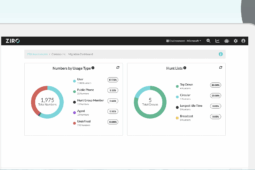In the world of Unified Communications, far too many times companies look at UC technology as an inward-facing tool only—meaning it is used by teams of people to only text, video chat, and meet.
Now, as we all know, it’s completely understandable that UC is viewed in such a linear manner. This past year, UC was the tool that connected everyone internally, enabling mission-critical work-from-home functionality in the face of the global pandemic.
One year later, many companies remain focused on the Work 2.0 paradigm—soon to be hybrid work environments as vaccines begin to roll out, bringing the world back to some semblance of normal. However, through all of the panic and resulting acceleration in UC technology adoption, the end-user—the customer—has largely been ignored. Why is that?
By and large, the great UC adoption of 2020 was largely internally focused, with a secondary and sometimes haphazard point solution integrating new UC work-from-home tools with legacy contact center systems. And rightfully so—at the time, the need for people to vacate offices and call centers was greater than the entirety of the UC stack. But … and this is a big but … it’s high time that the customer be placed into the UC spotlight.
As all of the benefits of video, chat, SMS, email, conference calling and so much more settle into the world’s collective ethos, it is without a doubt that end-user customers should be seeing a piece of that proverbial action. And here’s why: though the term Digital Transformation may seem vague (and it is), the truth of the matter is that at its core it represents the connectivity of all systems and all people. Hence, if people can all talk to each other internally at the office through any channel, then why can’t they offer that same seamless experience to the customer?
More so, the impact of Digital Transformation has made a tremendous impact on the general expectations of customer experience—a force to be reckoned with. Customers know the possibilities: they experience those possibilities with a handful of other goods and service providers, and now they expect that from all businesses, regardless of market or vertical.
This means that if their favorite sporting goods company has an amazing customer service experience—one that seamlessly routes them to the right person with the right knowledge of their account—and they can interact through any channel they desire, then by default your company MUST have the same experience.
This brings us to the point of the question, “How would you rate your Customer Experience?” Or do you even have the tools to do so?
More and more businesses are discovering that cloud-based contact center solutions can help them keep pace with today’s changing business landscape. These organizations have already discovered that cloud solutions not only offer the affordability, simplicity and reliability they want, but they also feature the agility and multichannel capabilities needed to keep up with the shifting behaviors of today’s consumers. Better yet, the analytics and business intelligence that natively comes with these tools enable the measurement of success, as opposed to the metric of failure.
In all, cloud contact center technology is the only way to keep pace with customer expectations, maintain and deliver exceptional customer experience, and ultimately win the fight in keeping and attracting market share.
Are you ready?
Ready to take your unified communications from headache to hassle-free?
No throwing darts at proposals or contracts. No battling through the back-end. No nonsense, no run-around.



